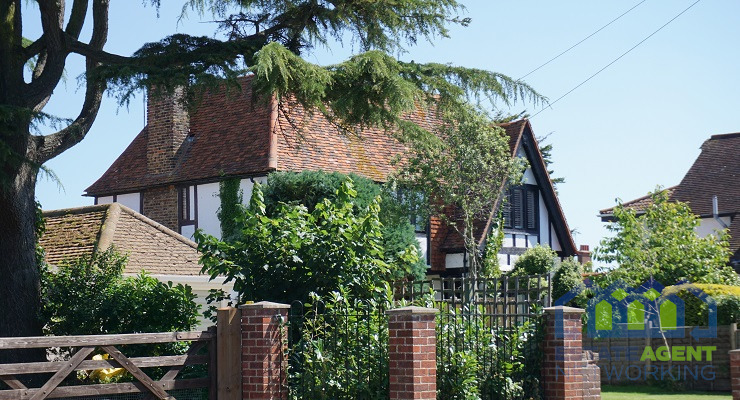Rightmove House Price Index
Autumn opportunity for ‘keep your nerve’ buyers as uncertainty bites again
- The price of property coming to market falls by 0.2% (-£730) this month, the first fall at this time of year since 2010
- No sign of autumn bounce yet, with signs that heightened political uncertainty is causing some to hesitate, giving a better negotiating opportunity to autumn buyers who can keep their nerve:
- Number of sales agreed is down in all regions compared to a year ago, with the 5.5% drop a marked reversal from the +6.1% sales agreed flurry that we reported a month ago
- Number of properties coming to market is down by 7.8% this month compared to the same period a year ago, again with all regions down on the prior year
- Annual rate of price increase drops to just 0.2%, buoyed by the north and dragged down by parts of the south
The average price of property coming to market falls by 0.2% (-£730) this month. September is usually the start of an autumn bounce in housing market activity, yet this is the first price fall recorded at this time of year since September 2010, with rises recorded every year for the last eight years. While the underlying housing market fundamentals remain sound, uncertainty is causing some to hesitate and this heightens as we get closer to a Brexit deadline. However, this also gives autumn buyers who keep their nerve a better negotiating opportunity.
Miles Shipside, Rightmove director and housing market analyst comments: “Many have got used to living in the jaws of uncertainty since the referendum over three years ago, and have been getting on with their lives and housing moves. However, as we approach yet another Brexit deadline, there are signs that the increasing gnashing of teeth is causing some to hesitate. The autumn bounce normally kicks off at the same time as kids go back to school, but this year it’s a late starter at best, and if uncertainty persists then the autumn term could be missed altogether and its activities be delayed until the new year. Those who are planning to buy or trade up and can keep their nerve whilst others hesitate may find that they are in a stronger negotiating position to get a favourable deal.”
The number of sales agreed is down this month in all regions compared to the same period a year ago, indicating that this is widespread hesitation rather than being restricted to some geographic areas. The 5.5% national drop is a marked contrast and large turnaround to the +6.1% sales agreed flurry that we reported a month ago. This is only a monthly snapshot, however, and a look year-to-date figure shows that the average sales agreed numbers are only down by 3.4% on a year ago.
Shipside observes: “In August we reported a pre-Brexit buying spree with the number of sales agreed up by over 6% compared to the prior year, as buyers and sellers decided to get deals secured well before the next Brexit deadline. A month later, as the deadline gets closer and tensions heighten, there has been a big swing the other way with sales agreed numbers now over 5% below those of a year ago. Buying activity is still at nearly 95% of what it was a year ago, but sellers in all regions are seeing fewer sales go through, so should be more willing to negotiate with prospective buyers if they want or need to get a deal done.”
Fewer property owners seem to have the need or desire to put their property on the market, again likely to be influenced by the backdrop of increased uncertainty as well as lack of suitable choice of properties for them to buy. The number of newly-marketed properties is down by 7.8% this month compared to the same period a year ago, again with all regions down on the prior year. This is influenced by what’s happening in London, where there is a drop of more than 20% in new properties coming to market as some owners await a Brexit outcome and market recovery.
Shipside notes: “All regions are down on their numbers for both sales agreed and properties coming to market. Some regions are just marginally behind the previous year, but they are all seeing less activity in these two key metrics, showing that hesitation is now more widespread rather than being localised to just some parts. However, some of that will be due to difficulty in finding the right property to buy, as activity still remains brisk in some locations, evidenced by continuing upwards pricing pressure in some parts of Great Britain. Uncertainty is clearly not just about the political situation, with finding the right property to buy being a bigger worry for many.”
While the average annual rate of price increases drops to just 0.2%, this is buoyed by the north and dragged down by parts of the south. London has properties now coming to the market at an average of 2.1% cheaper than a year ago, with the South East region also in negative territory at -1.1%. All other regions have new seller asking prices up compared to a year ago, with the North West being the most buoyant at +3.5%.
Shipside adds: “There’s obviously some year-on-year bounce occurring in prices in the North West, and also in the North East, Yorkshire & the Humber and Wales, which all have new sellers asking at least 3% more than at this time last year. Buyer affordability and investor activity create and maintain market momentum, but these factors are lacking in parts of the south.”









